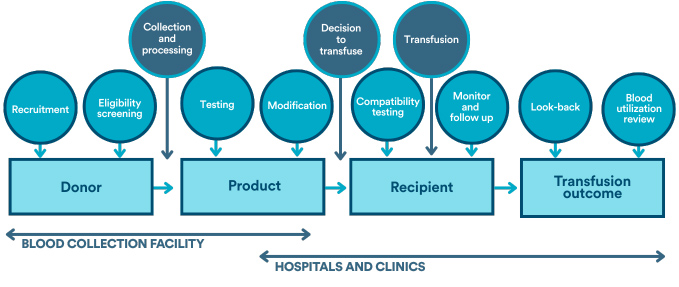Blood transfusion is a medical therapy that can be life-saving. As with any treatment, however, transfusion of blood or blood components must be ordered and administered safely and appropriately. Transfusion is more than a single discrete event—it is a process. The transfusion chain begins with donor considerations (whether their donation is safe for them to make and whether the donation is safe for any patient to receive). Once blood is collected, the safety of the blood product is a focus of activity (infectious disease testing, compatibility testing, necessary modifications such as irradiation or leukocyte reduction). The endpoint of the transfusion process involves recipient considerations (proper identification of the unit and the patient, appropriateness of blood as the best treatment modality, administration of the unit, evaluation of the recipient).

AABB Urges Policymakers to Consider Sickle Cell Disease Comprehensive Care Act
November 13, 2025
November 12, 2025
Reminder: Limited-Time Discount Available on AABB's Laboratory Leadership Program
November 12, 2025